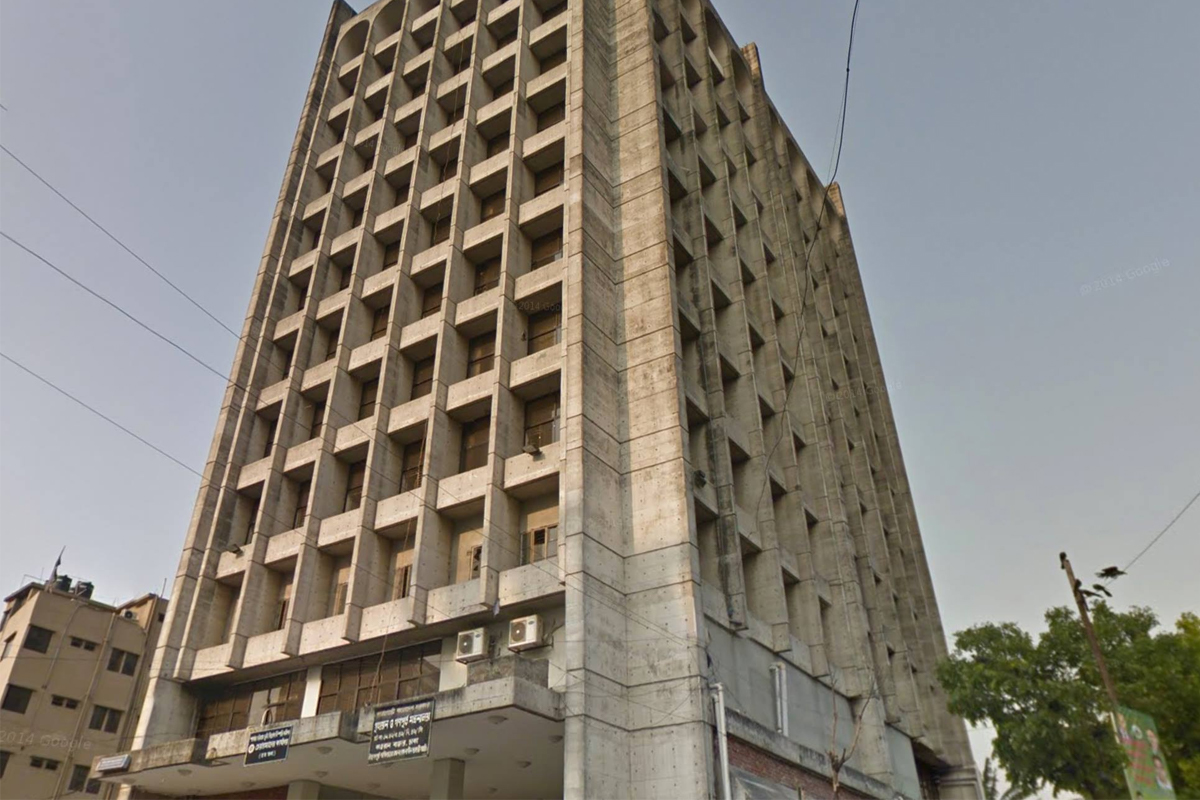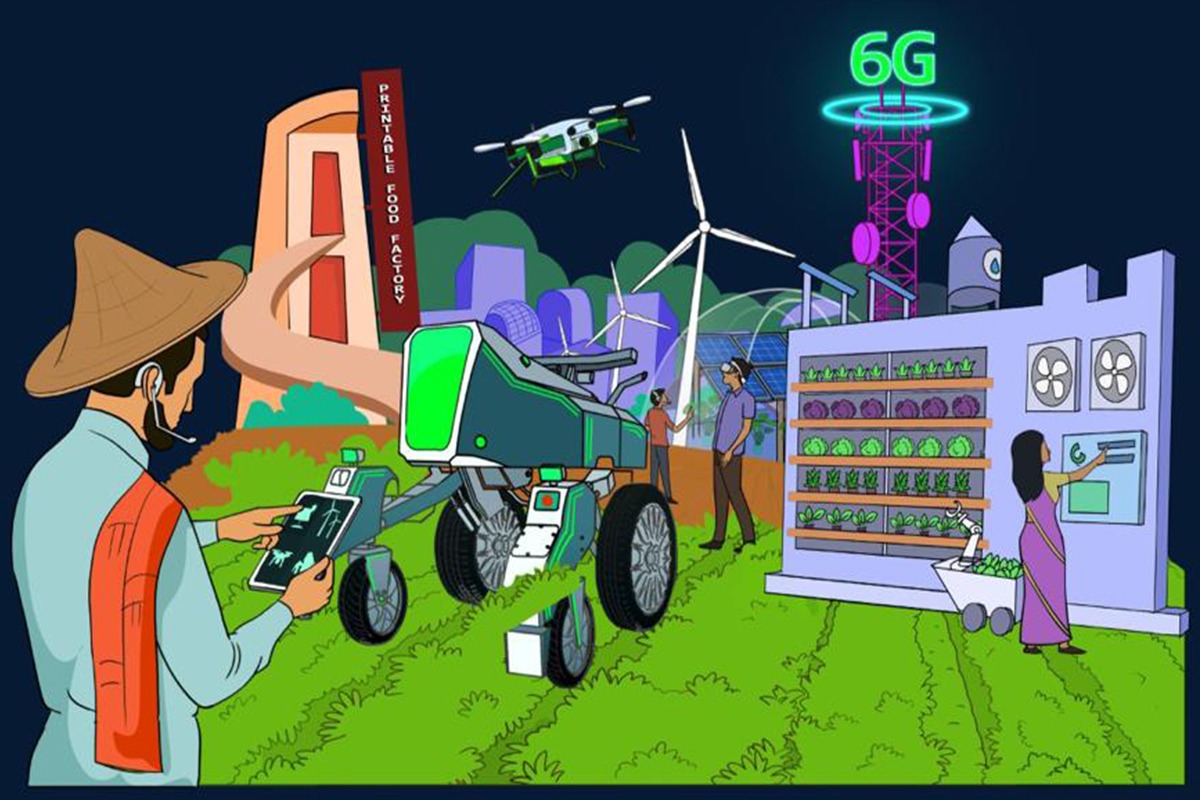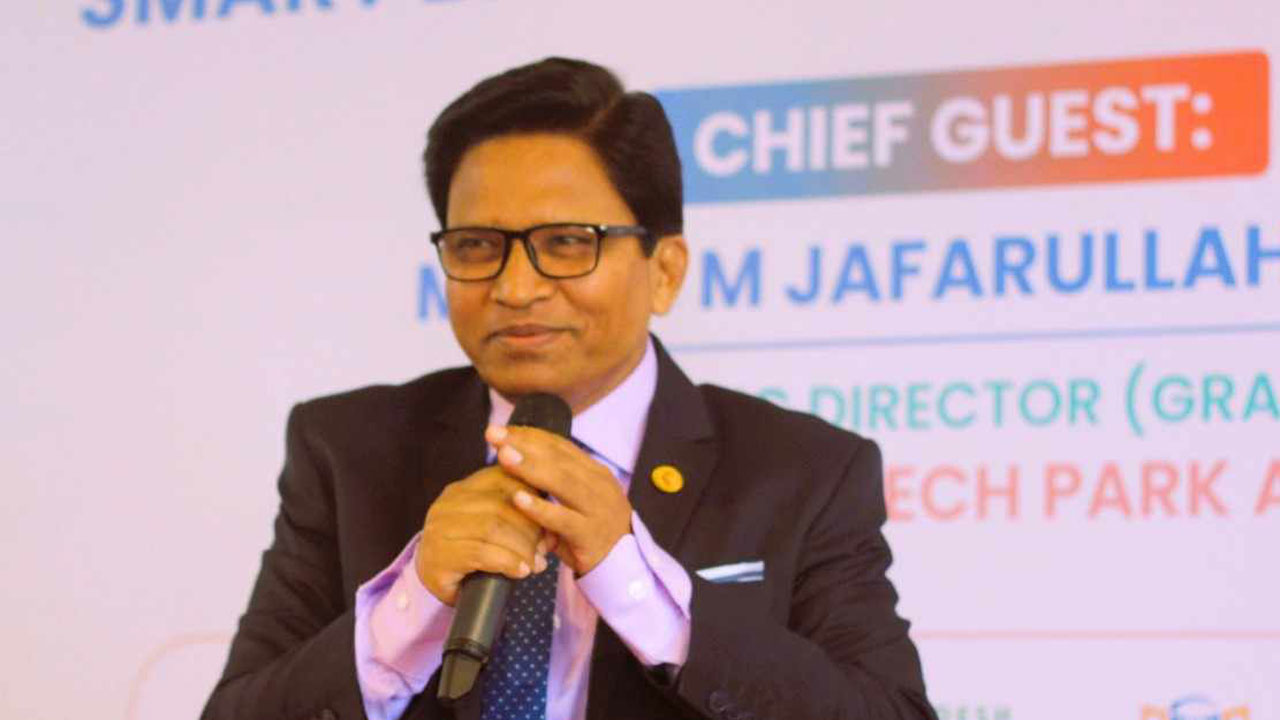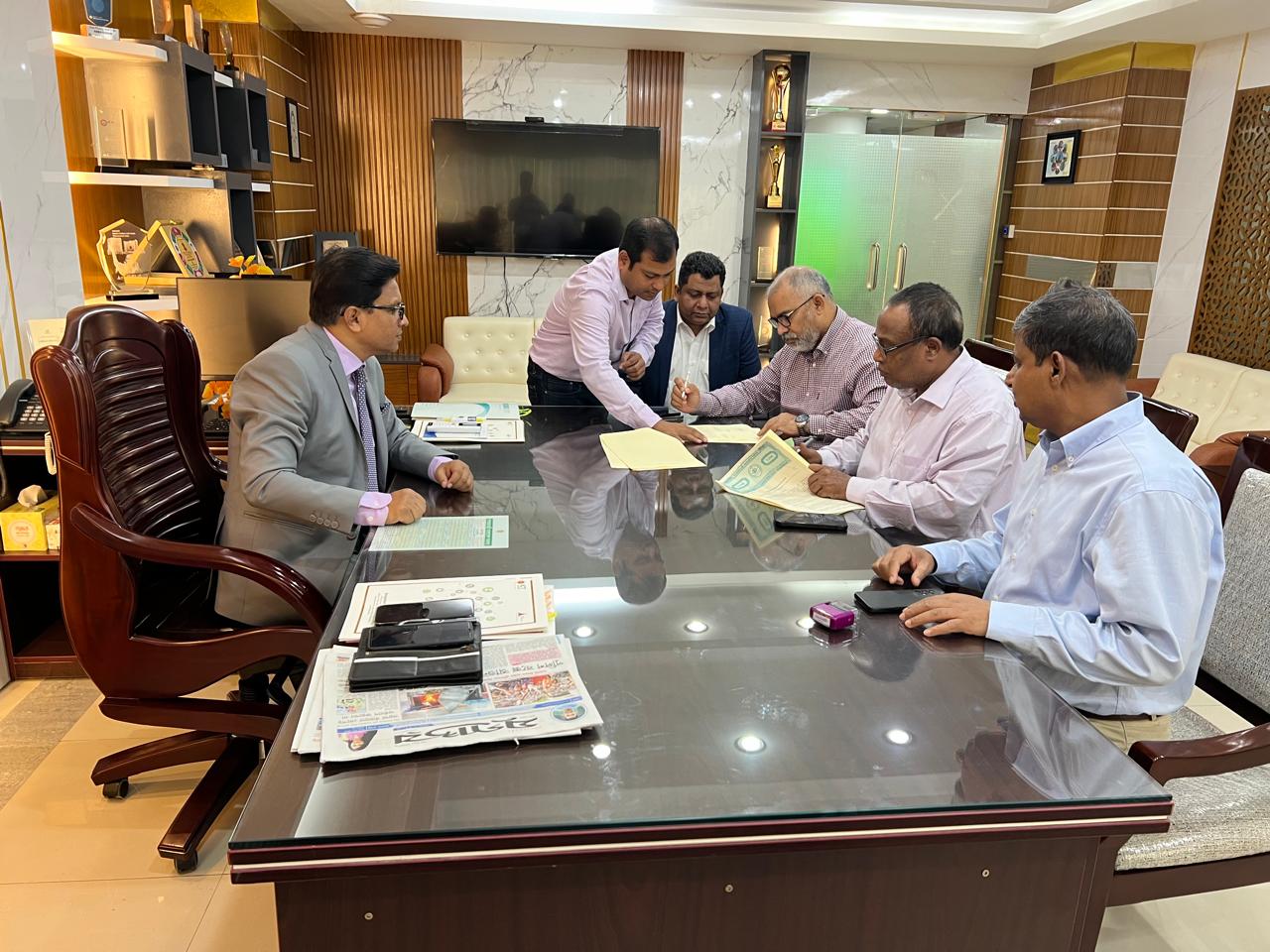A Brighter Future: Bangladesh's Journey Towards a Modern Nation
Bangladesh, a nation with a rich cultural heritage and a population of over 160 million people, has embarked on a transformative journey to build a more prosperous and advanced future. From the inception of Vision 2021 to the ongoing pursuit of Vision 2041, the country has set ambitious goals to address socio-economic challenges, harnessing technology and innovation to propel its development trajectory. Central to this vision is the Bangladesh Hi-Tech Park Authority (BHTPA), established to foster the growth of the country’s technology sector and drive modernization.

Vision 2021: A Foundation for Growth
Vision 2021, launched in 2008, aimed to transform Bangladesh into a middle-income country by its 50th anniversary in 2021. At the heart of Vision 2021 was the goal of achieving sustainable development across various sectors, including education, healthcare, infrastructure, and governance. The government’s commitment to modernization and innovation laid the groundwork for Bangladesh’s transition towards becoming a knowledge-based economy. Initiatives such as the Digital Bangladesh and the National ICT Policy provided a framework for leveraging technology to improve service delivery, enhance transparency, and empower citizens.
The Bangladesh Hi-Tech Park Authority (BHTPA) emerged as a critical enabler of Bangladesh’s modernization journey. Established in 2010 under the Ministry of Information and Communication Technology, BHTPA is responsible for developing and managing hi-tech parks across the country. These parks serve as hubs for innovation, bringing together industry players, academia, and government agencies to foster collaboration and knowledge exchange. BHTPA’s initiatives, such as the Sheikh Hasina Software Technology Park in Jessore and the Bangabandhu Hi-Tech City in Gazipur, have attracted investment from domestic and international tech companies, fueling the growth of Bangladesh’s IT sector.
Vision 2041: Towards a Modern Bangladesh
Building on the achievements of Vision 2021, Bangladesh has set its sights on Vision 2041, envisioning a prosperous, inclusive, and sustainable future. Central to Vision 2041 is the goal of achieving developed country status by 2041, marking the 50th anniversary of Bangladesh’s independence. The vision emphasizes the importance of innovation, entrepreneurship, and modernization in driving economic growth and improving quality of life. Initiatives such as the Digital Bangladesh 2041 roadmap and the Fourth Industrial Revolution strategy outline the country’s path towards leveraging emerging technologies, including artificial intelligence, blockchain, and the Internet of Things, to address complex challenges and unlock new opportunities.
Over the past decade, significant investments have been made in education and skills development to equip its workforce with the knowledge and capabilities needed to thrive in the modern age. Programs such as the Skills for Employment Investment Program (SEIP) and the Information and Communication Technology (ICT) Division’s training initiatives have empowered millions of Bangladeshis with digital skills, enhancing their employability and driving entrepreneurship. Additionally, infrastructure projects, including the expansion of broadband connectivity and the establishment of digital hubs in rural areas, are bridging the digital divide, ensuring that all citizens can benefit from the opportunities presented by the modern revolution.


The journey from Vision 2021 to Vision 2041 represents a testament to the country’s resilience, determination, and vision for a brighter future. Through strategic planning, policy reforms, and investments in technology and innovation, Bangladesh is laying the foundation for sustainable development and economic prosperity. The role of institutions like the Bangladesh Hi-Tech Park Authority (BHTPA) and collaborative efforts between the government, private sector, and civil society are instrumental in driving progress towards building a modern Bangladesh. As the country continues on its path towards Vision 2041, it holds the potential to emerge as a global leader in innovation and sustainable development, inspiring nations around the world.
The Government of Bangladesh has declared ‘Vision 2021’ with a target to make Bangladesh as a middle income country using Information and Communication Technology (ICT) and development of favorable business environment for innovative companies. ICT has been considered as a thrust sector. The government has taken various initiatives to achieve the target.
Among them conducive business environment for Hi-Tech Industries is mentionable. So, Information and Technology (IT) Village/Software Technology Park (STP) in divisional level will be one of the important and priority projects which would be the milestone for the development of IT sector as well as industrialization in Bangladesh. Bangladesh Hi-tech Park Authority is the official body of Bangladesh Government to boost up hi-tech industries in Bangladesh. To fasten up the economic development of the country, Bangladesh Hi-Tech Park Authority (BHTPA) was established in 2010.
The purpose of the act is to the establishment of the Bangladesh Hi-Tech Park Authority to make provision for the establishment and expansion of Hi-Tech industry for creation, management, operation and development of Hi-Tech Park within the country.
It is an autonomous body comprising 76 personnel; Managing Director (MD) is the Chief Executive of the authority. There is an Executive Committee (EC), headed by the minister of ICT to look after the day to day policy matters of the authority. Representatives from different ministries, local bodies and professional stakeholders are the members of the EC.
In spite of that, a Governing Council, headed by the honorable Prime Minister, also overviews the overall policy matters of the authority.

The Digital Bangladesh program was launched in 2009. It aims to be at the forefront of achieving the vision of transforming Bangladesh into a country of the digital economy by 2021 and a knowledge-based economy by 2041.
Many of the steps taken to build a digital Bangladesh by 2021 have already been implemented. The main goal of digital Bangladesh is to digitize government services.
The four pillars of Digital Bangladesh – Human Resource Development, Connecting Citizens, Digital Government, and Promotion of ICT Industry – are playing a central role in aiding this fantastic growth story.

Today more than 120 Bangladeshi companies are exporting ICT products worth nearly USD 1 Billion to 35 countries. We plan to take this to USD 5 Billion by 2025.
Honorable Prime Minister Sheikh Hasina has declared Bangladesh is becoming a peaceful, prosperous and developed country by 2041 by implementing the vision 2041 —By this time, the governance system of Bangladesh will be decentralized.
Bangladesh is projected to turn into a developed nation with US$ 16,000 per capita income and poverty will be a matter of distant past in this Sonar Bangla (Golden Bangla) in 2041.
Notable digital services are e-commerce, e-banking, e-education, e-book, e-voting, e-health service, e-filing, e-mutation, e-paper, etc. Now a lot of work can be solved online at home. Electricity, gas and water bills can be paid online.

Even online registration, online income tax return, online public exam result, transportation tickets are at hand today. Money can be easily transferred from one place to another within seconds through bKash, Rocket and Nagad.
An e-book platform has been opened to spread the light of education. Arrangements are being made to read all types of textbooks through the internet. The government has already started implementing the National Information and Communication Technology policy extensively to build skilled human resources. 39 ministries have been involved in the implementation of 306 action plans.
The country’s first high-tech park has been constructed on 202 acres of land at Kaliakair in Gazipur to strengthen the IT sector. A project called Bangladesh e-governance has been launched to establish a network in all parts of the country. A company called ICT Corporate City Development has been set up to train ICT graduates. The government has started work on the Rooppur nuclear power project to provide an uninterrupted power supply.

Union Digital Centres (UDCs) are one-stop shops serving rural citizens. These are a hallmark achievement of the government’s Digital Bangladesh vision, which envisages using them to provide all public and private services to rural citizens.
A Transparency International Bangladesh (TIB) research report in 2017 found that corruption has reduced as a result of UDCs because “chances of becoming victims of corruption” have been minimized.
The most popular public services in UDCs today are birth registration, citizen certificates, and registration for migrant workers.
Some increasingly popular private services include mobile financial services, insurance, computer and vocational training.

The ‘Vision 2041’ has been adopted in line of ‘Vision 2021’ to provide impetus to the development dream of the nation. Its aim is to end absolute poverty and to be graduated into higher middle-income status by 2031, and eradicate poverty on way to becoming a developed nation by 2041. Learning from the experience of higher middle and high-income countries, we will deliver all facilities of a modern city at the village level transforming our villages at the center point of development.
The Perspective Plan 2021-2041 has been prepared to translate the policies and programmes enshrined in the Vision 2041 into development strategies. This document is the development vision of the government of a prosperous Bangladesh, a strategic description of the goals and objectives and a roadmap for its implementation.
The institutional basis of this plan is fourfold, such as, good governance, democratization, decentralization and capacity building. The main beneficiary will be the people of Bangladesh and they will be the key driving force of growth and transformation.
